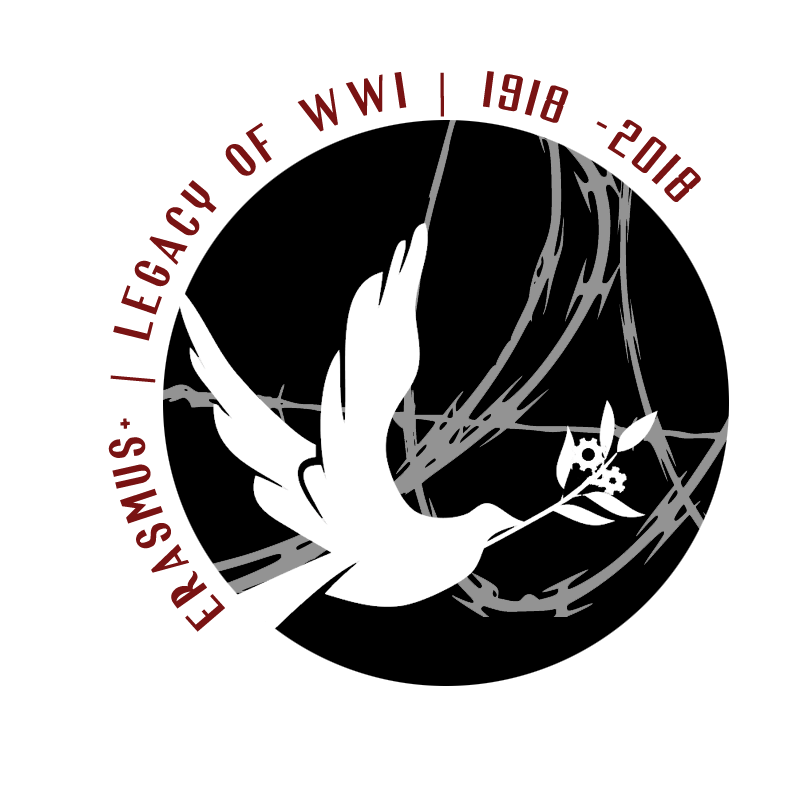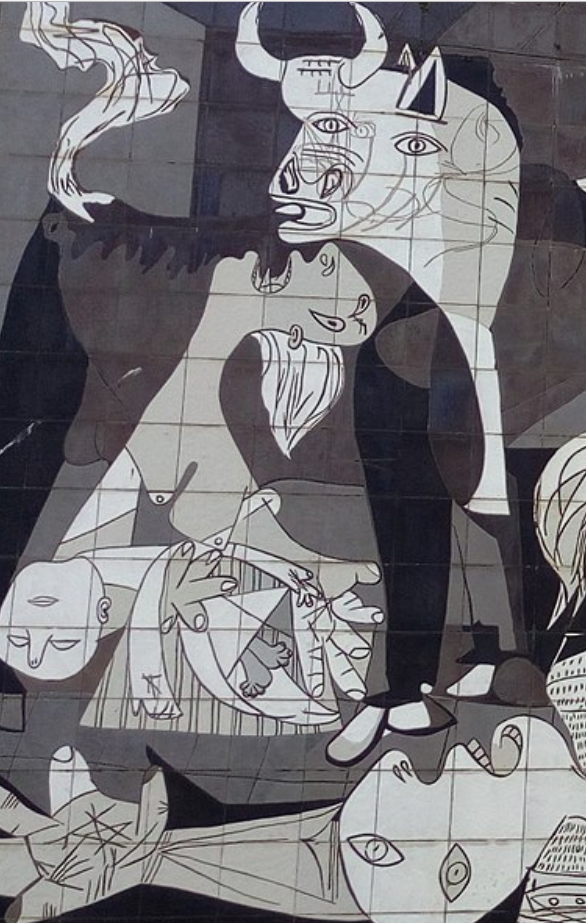 WWI (1914-1918), the war to end all wars, brought destruction on an unprecedented scale. What it did not bring was lasting peace. Less than 20 years after armistice, Pablo Picasso completed his famous mural “Guernica”. Some say that Picasso meant to criticize the Fascist bombing of the town of Guernica in 1937; others see his painting as a general anti-war statement and an artistic expression of Picasso’s manifesto:
WWI (1914-1918), the war to end all wars, brought destruction on an unprecedented scale. What it did not bring was lasting peace. Less than 20 years after armistice, Pablo Picasso completed his famous mural “Guernica”. Some say that Picasso meant to criticize the Fascist bombing of the town of Guernica in 1937; others see his painting as a general anti-war statement and an artistic expression of Picasso’s manifesto:
“It is my wish to remind you that I always believed, and still believe, that artists who live and work with spiritual values cannot and should not remain indifferent to a conflict in which the highest values of humanity and civilization are at stake.”*
(Pablo Picasso, 19th December 1937)
Distortion and disintegration, chaos and collapse are words that might come to mind when you look at the artist’s famous piece of work. “Guernica” seems like a collage in white, grey and black, which has destroyed naturalistic conventions of form, proportion and perspective. A horse, a bull, a dying soldier, a grieving mother with a dead baby in her arms – all these are details which can be found in “Guernica” and yet give no adequate description. The longer you look at displaced eyes wide open with pain or terror, at bodies, limbs, hooves and tails, the more you realize that a world at war never makes sense – and never will.
Image Quotation: Winfried Weithofer, Replik des Guernica-Bildes von Pablo Picasso in Guernica. This file is licensed under the Creative Commons Attribution-Share Alike 4.0 International license.
TRANS EU ART PROJECT: Art after WWI
Year 10 students at Goetheschule Essen compared Guernica’s political message to Le Rêve, Picasso’s private glimpse on a dreaming woman. They then discussed elements that may be considered typical of cubism and painted their own portraits in cubist style. The gallery below presents some of the students’ most creative artworks.
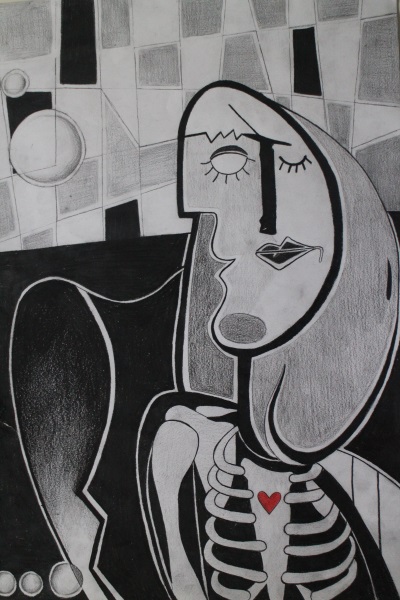
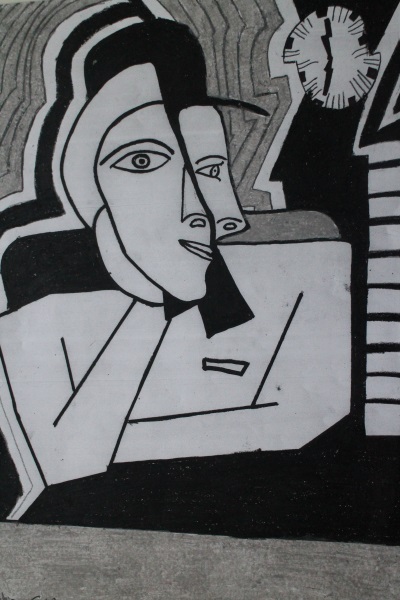
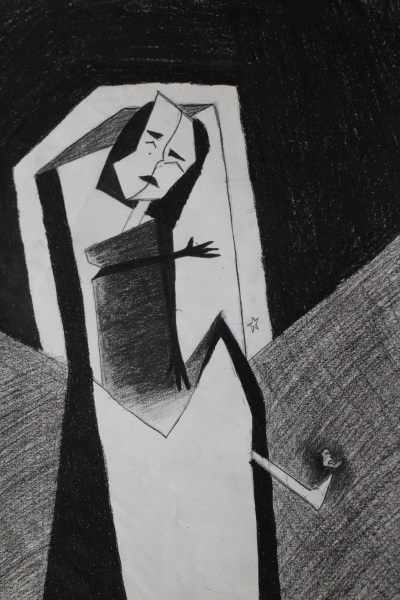
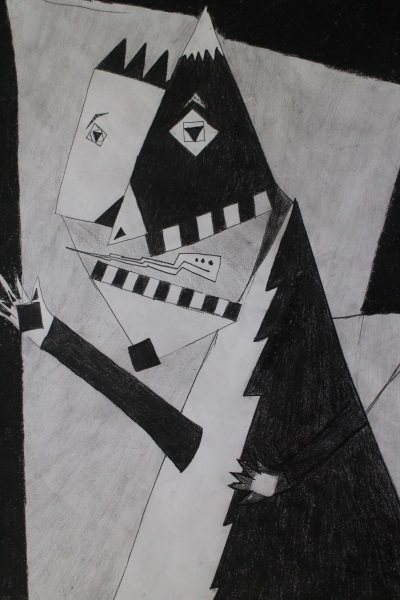
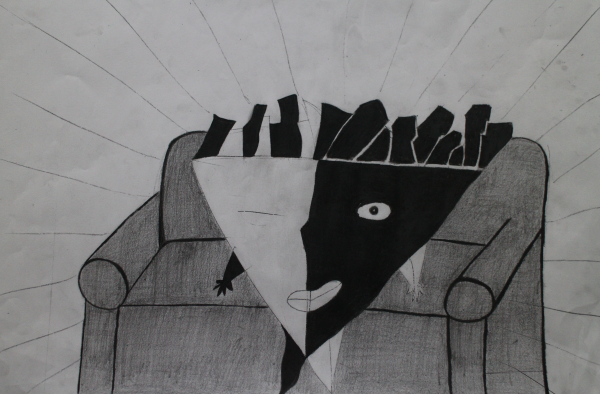
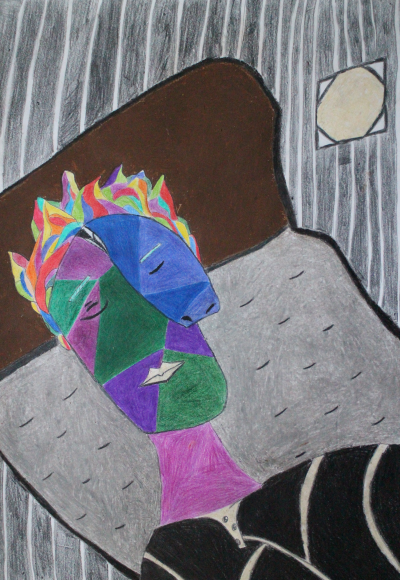
______________________________________________________________
* Lydia Gasman, War and the Cosmos in Picasso's Texts, 1936-1940, p. 358
